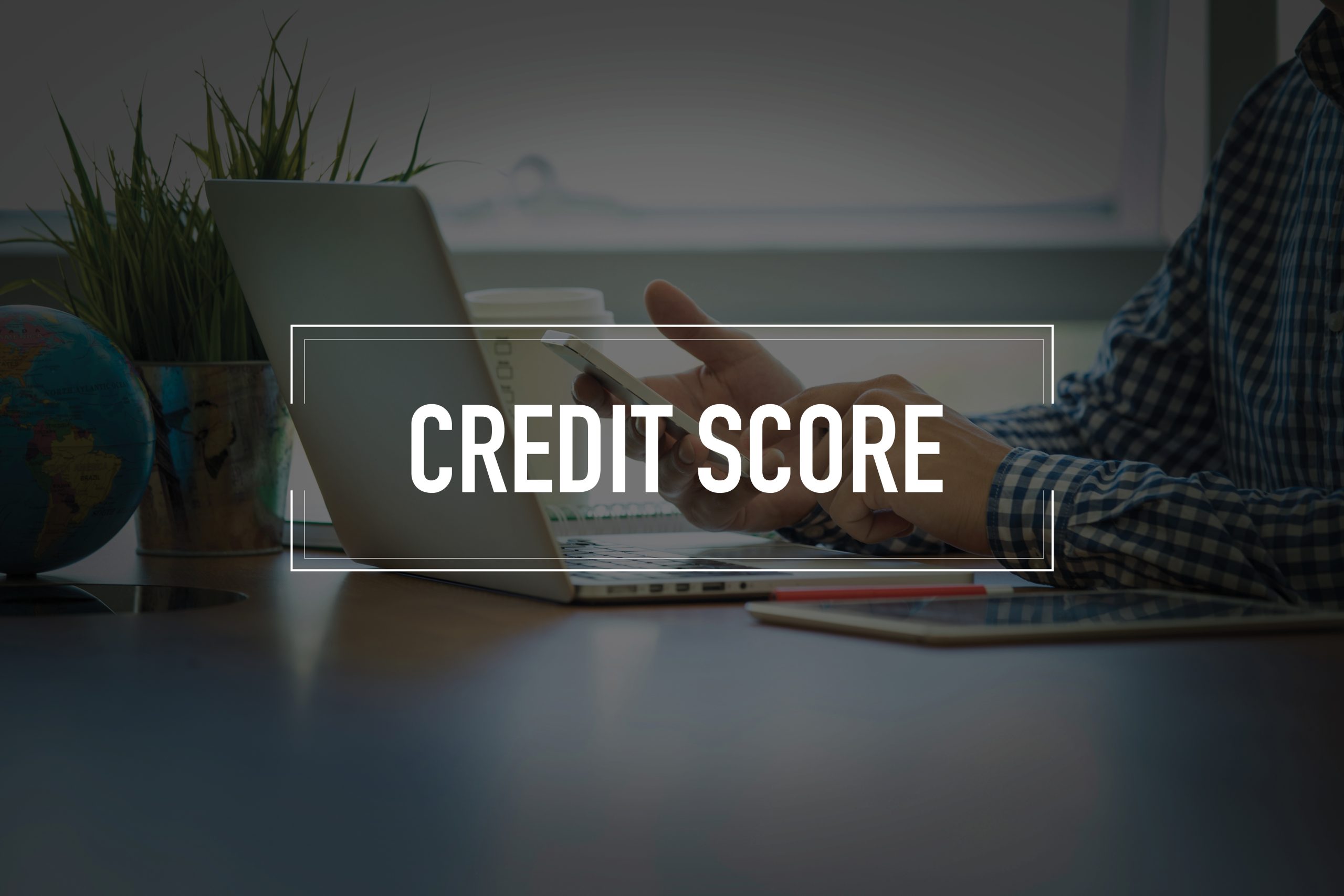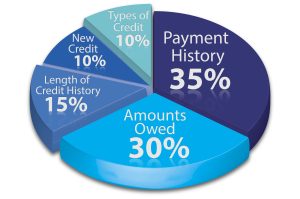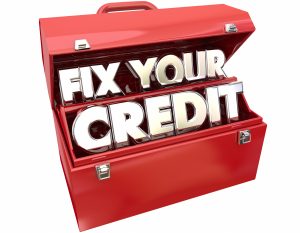
Whether you’re confident in your ability to qualify for a mortgage or you’re weary that a tumultuous credit history will result in a less-than-ideal loan, your credit score can be a useful and informative tool.
However, the many free websites, like Credit Karma or Credit Sesame, that offer a free look at your credit score often misrepresent the complete picture of a borrower’s credit history. These glimpses into creditworthiness can provide a general, educational credit score, but should not be relied on as an accurate depiction of the score a mortgage lender will use.
So just because the educational credit score you receive from a service like Credit Karma or myFICO strikes you as too low to qualify for a mortgage with a favorable interest rate does not mean a lender will reach the same conclusion. Even when the score eventually considered by lenders results in a loan with an interest rate higher than desired, there are several paths that can lead you to an improved credit score and a lower interest rate.
This article will clarify the differences between the various credit scores you can receive from an educational credit service and those actually examined by a mortgage lender. It will also assess the different components of your credit history that are analyzed to compute your credit score, and offer some advice to improve your credit score in the eyes of lenders.
The score a mortgage lender sees
As established above, the credit score you may see from a free credit-monitoring service will almost always differ from the score a lender sees when pulling your credit. For example, Credit Karma utilizes the Vantage Score, a similar model to the FICO score, but one that considers your credit information differently.
While the Vantage Score has become increasingly prevalent, the method of calculation used by Credit Karma leaves room for significant variation. Credit Karma, for example, only utilizes information on your credit history from two of the three main credit bureaus, TransUnion and Equifax. And because not all creditors report to each credit bureau, it is possible that the information used to calculate a credit score by Credit Karma is not a complete representation of your credit history.

Whether or not a credit-monitoring service uses the Vantage Score or the FICO score, it is important to know that the information you receive from a service like Credit Karma or even the score you see on your credit card statement, will not be the same score a mortgage lender uses to assess your creditworthiness. Despite these discrepancies between the different versions of your credit score, free monitoring services, like Credit Karma, can be useful educational tools as you begin the home buying process.
Not all credit-monitoring services are the same. Some only look at part of your credit history, and others use a completely different formula than mortgage lenders.
Mortgage Lenders most often use the FICO score model to determine a borrower’s eligibility for a loan. However, with more than fifty FICO credit score formulas, it can be difficult to reach the same conclusion a lender will when using online credit-monitoring services.
To calculate your credit score for mortgage purposes, a lender will view one credit score from each of the three main bureaus. This all-encompassing approach allows a lender to ensure your complete credit history is reviewed, and no creditor information is ignored. A lender will then often choose the middle of these three scores as the determinant for a borrower’s loan qualification.
Knowing that the credit score you see online will most likely differ from the one a mortgage lender will see when assessing your eligibility for a loan is a good start when preparing for a mortgage. Similarly, understanding what information is included on your credit report and how important different accounts can be will make a big difference as you prepare to apply for a mortgage.
What information makes up my credit score?

Far from a number based on how many credit cards you have, a credit score is a dynamic representation of both positive and negative aspects of your credit history. While 35% of your credit score is based on negative accounts, like bankruptcy and late fees, the remaining 65% of your score is composed of positive credit accounts, like credit cards and loans. Understanding what contributes to these positive and negative components can be a great step towards improving your credit score.
Payment History: 35%
This section of your credit score considers all open accounts to assess the potential risk you pose as a borrower. While consistent payments towards these accounts can bolster your score in this section, delinquent accounts can severely limit and even overpower the impact of any positive history.
Many of the components of your payment history significantly affect the perception of the risk you pose for lenders. The total number of past due items and how long they have been past due, for example, can pull down your score in this section. Similarly, negative public records or collections, like bankruptcy, charge-offs or late fees, will push down your score in this heavily weighted section.
Most notable in the Payment History section, however, is the impact of newly opened accounts on your perceived risk. Because current risk is much more relevant than most other factors, including the number of accounts, the newer an account is, measured by the date of last activity (DLA) of an account, the more damaging it can be to your credit score.
The newer an account is, regardless of the type or balance, the more damaging it can be on a credit report.
Worth 35% of your credit score, Payment History can be both a tremendous boon or a substantial bottleneck. Despite the apparent ease with which this section can decrease your credit score, the remaining components, making up 65% of your credit score, present several opportunities to make up for any potential losses.
Credit scores are characterized by many moving pieces, each pulling on another. By understanding how each piece fits together, you have the potential to improve your score.
Amounts Owed: 30%
This section of your credit score, worth 30%, details how much you owe on revolving accounts and highlights your monthly usage, including current balances. It searches for indications of over-extension and demonstrations of your ability to consistently pay your accounts.
Revolving accounts, like credit cards, are often the biggest indication of such over-extension, measured by how much of your revolving credit lines you have used. Similarly, your payment progress on installment accounts compared to the remaining balance helps to establish your credibility as a consistent borrower.
Consistency is a significant part of this section of your credit score, and revolving accounts are often the best way to establish a payment pattern. Your credit score, consequently, emphasizes revolving accounts, but not at the expense of reckless spending. Approaching your credit limit or maxing out a revolving account can create a perception of increased risk, and often damage this section of your credit score.
Revolving accounts, like credit cards, when used responsibly, can boost this section of your credit score. But be sure not to overextend yourself and lead lenders to believe that you are likely to miss payments.
Length of Credit History: 15%
As the length of your credit history increases, and with it the amount of time that’s passed since your last activity, the greater the potential to increase your score. The longer your good history, the better your score in this section.
While this component of your credit score seems similar to the Payment History category, it values good credit maintained over time. So, the shorter the amount of time an account has been open, the lower your score in this section will be. On the contrary, the longer an account is open, the longer it can contribute to your credit score.
Importantly, once any of your accounts is paid off and closed, it will no longer benefit this section of your score. Revolving accounts, like credit cards do not have to close, but loans will eventually be paid off. So credit cards can be a crucial tool to building long term consistency and credibility as a borrower.
While the length of your credit history looks for long-standing credit accounts, it may prove detrimental to your credit score to open as many accounts as possible, as the other components of your credit score may view many accounts as an indication of more risk.
Like your Payment History, the Length of your Credit History considers your risk in conjunction with the amount of time in which your accounts have been open. The newer an account, the lower your score in this section will be.
And when opening new accounts, your score in the Length of Credit History section may temporarily decrease. Your score in this section is determined by averaging the amount of time each account has been open. So, new accounts will initially reduce the length of your credit history.
Types of Credit Used: 10%
This component of your credit score is based on the total number and types of your accounts. Rather than a strong showing of many of the same type of account, a variety of accounts often leads to a higher score in this section.
Generally, it is beneficial to have one account for every category: a revolving account, an automobile loan, a mortgage, and a personal loan (i.e. a student loan or an American Express card with no credit limit). This broad mix of accounts can demonstrate your ability as a homebuyer to handle debt responsibly and not be overcome by risk.
A wide range of accounts can demonstrate your responsibility as a potential homebuyer to lenders, and lead to an improved credit score.
While a diverse set of accounts is seen as a positive feature of your credit history, frequent opening and closing of accounts just to establish this diversity can also affect your credit in other sections. Opening up a new revolving account after closing an older auto loan, for example, can lead to changes not only in the Types of Credit Used, but also in the Amounts Owed section.
New Credit: 10%
As a measure of the number of accounts you’ve recently opened, and the ratio of new accounts to the total number of accounts, this section of your credit score strikes some similarities to the Types of Credit section. In addition to tracking the number of new accounts you’ve opened, this section also monitors the number of recent credit inquiries.
In addition to watching your recent activity, this component of your credit score checks to make sure you’ve rebuilt a positive credit history after any previous payment problems. Ultimately, it assesses your ability to handle the new debt you’ve taken on by opening new accounts.
The New Credit section of your credit score checks to make sure you aren’t attempting to open numerous accounts without responsibly maintaining them.
Often, when opening new accounts, your credit score will decrease. This slight reduction serves as a check on your ability to maintain this new debt. After establishing a consistent payment history with a new account, your score in this section will begin to increase. By preventing you from rapidly opening numerous accounts, this temporary decrease allows you to gauge your ability to handle more debt.
Credit Tips
As you may have determined, with a new understanding of the different components of your score, credit scores are the culmination of many moving pieces, each interacting with another to result in a single number that represents your creditworthiness. With each aspect of your score depending upon your individual circumstances, credit reports will always be unique. While no universal solutions are available, here are some general tips to guide you on a path to improving your credit.

It’s critical to know that credit must be created; no credit can result in the same, if not a more detrimental, effect as a low credit score. Without any accounts to create your credit history, it can be difficult, in the eyes of lenders, to establish your credibility as a borrower.
While credit cards are emphasized as an important part of your credit history, it’s just as important to monitor your use of these accounts to avoid an overextension of yourself and your payment capabilities. Similarly, just because you may be consistently paying your credit card balance does not mean you should increase the amount you use; signs of overextension or irresponsible habits can negatively affect many sections of your credit score. With credit cards, then, it’s good practice to show they are open and maintaining low balances, with at least a minimum payment being made on time each month.
Establishing responsible patterns should be considered an essential part of your journey to an improved credit score. Sometimes, however, what seems to be a responsible decision can negatively affect you. For example, the decision to pay off all of your accounts, while appearing as a fiscally responsible option, can result in a score reduction. By closing your accounts, you may inadvertently close positive accounts that are contributing to your credit score. And without these positive accounts, your score will decrease.
Late payments are a universal cause of credit problems. But, by finding a way that works best for you to avoid late payments, you can dodge the negative consequences to your credit score. This can be a difficult process, one that requires you to understand your capabilities now and in the future, but it is a tangible one.
As you work to improve your credit score, a consultation with a credit repair service can provide a personalized guide to help you with the process. You can contact National Credit Care (nationalcreditcare.com) to schedule a consultation with a credit expert and begin the journey to a higher credit score.
Conclusion
This blog post has attempted to provide you, whether a potential homebuyer, a credit-conscious consumer or a loan applicant weary of your credit history, with a general description of the multifaceted number that is your credit score, and how to gain the upperhand on this powerful aspect of the mortgage process.
While the scores you may see online from credit-monitoring services can give you an estimate of your credit score, this score will most likely differ from the one a mortgage lender will see. Consequently, understanding how your credit score is calculated and what you can do to improve it is an essential step on the path to a higher credit score. However, don’t let the volatile nature of your credit score deter you from beginning the homebuying process. There’s always room for improvement.
If you have any questions or concerns about your eligibility for a mortgage, call HomeLend USA at 248-781-9400, or visit our website at homelendusa.com.




